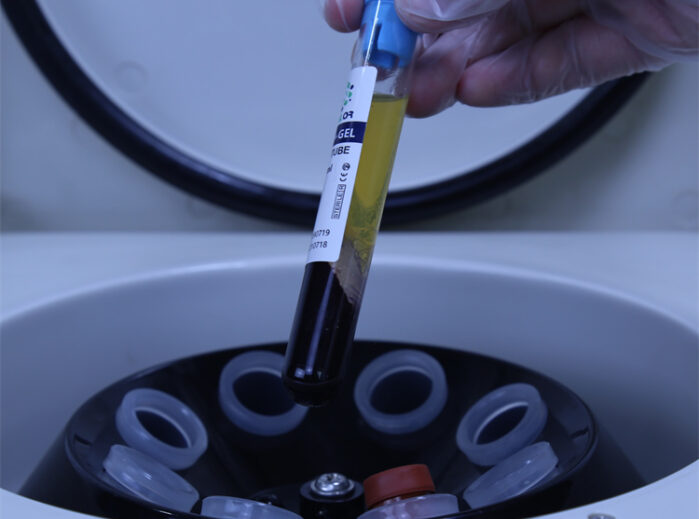PRINCIPLES AND METHODS FOR ISOLATION AND PREPARATION OF PLASMA PREPARATIONS CONTAINING PLATELETS (PR) -HOW TO IMPROVE THE PURPOSE AND EFFECTIVENESS.
Platelet-rich plasma (PRP) is a preparation of blood plasma that contains a higher concentration of platelets than normal blood. Platelets are a natural source of growth factors that play a crucial role in the process of tissue repair and regeneration. PRP is used in a variety of medical applications, including orthopedics, dermatology, and plastic surgery, among others. In this blog post, we will discuss the principles and methods for isolating and preparing plasma preparations containing platelets (PR) and how to improve the purpose and effectiveness.
PRP is obtained from the patient’s own blood, which is drawn and processed to concentrate the platelets. There are several methods for isolating and preparing PRP, and the choice of method depends on the intended use of the PRP. In general, the process involves the following steps:
Blood Collection: Blood is drawn from the patient and collected in a sterile container containing an anticoagulant.
Centrifugation: The collected blood is centrifuged to separate the red blood cells from the plasma. Depending on the desired concentration of platelets, the plasma may be further centrifuged to obtain a more concentrated PRP.
Activation: The PRP is then activated by adding a substance such as calcium chloride or thrombin. This step is necessary to release the growth factors from the platelets.
Application: The activated PRP is then applied to the area requiring treatment, such as a surgical site or an area of tissue damage.
Improving the Purpose and Effectiveness of PRP:
Standardization of PRP preparation: The use of standardized protocols for PRP preparation is essential to ensure consistent quality and concentration of PRP. This can be achieved through the use of automated systems that are designed to prepare PRP in a standardized manner.
Optimization of PRP concentration: The concentration of platelets in PRP is an important factor that affects its effectiveness. Research has shown that higher concentrations of platelets are more effective in promoting tissue repair and regeneration. However, excessively high concentrations of platelets can lead to adverse effects. Therefore, optimization of PRP concentration is important to achieve the desired therapeutic effect.
Combination with other therapies: PRP can be used in combination with other therapies such as stem cell therapy, laser therapy, or shockwave therapy to enhance its therapeutic effect. Studies have shown that the combination of PRP with other therapies can improve treatment outcomes in certain conditions such as osteoarthritis.
Timing of application: The timing of PRP application is critical to its effectiveness. PRP should be applied at the appropriate stage of tissue repair to maximize its therapeutic effect. For example, PRP may be more effective when applied during the early stages of tissue repair when the concentration of growth factors is low.
In conclusion, PRP is a promising therapy for tissue repair and regeneration. The principles and methods for isolating and preparing PRP are important to ensure consistent quality and concentration of PRP. Optimizing the concentration of platelets, combining PRP with other therapies, and applying it at the appropriate stage of tissue repair can further improve the effectiveness of PRP therapy.








